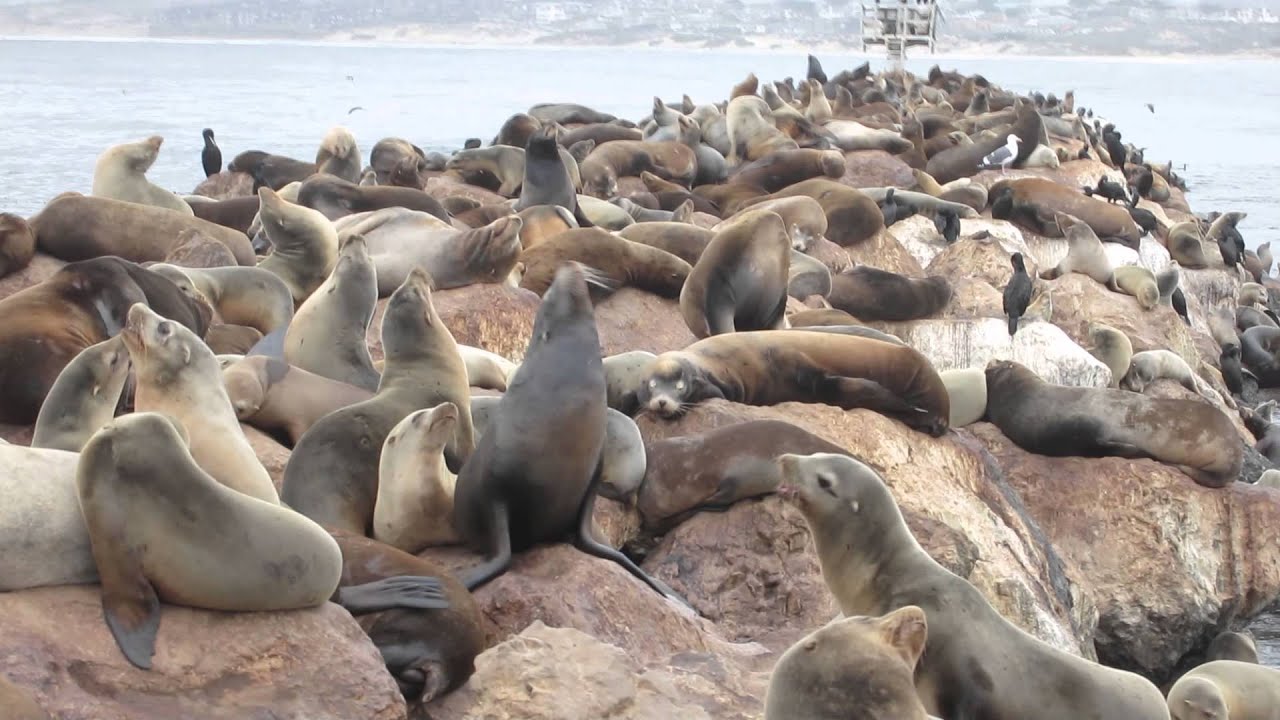
If you’ve ever visited a pier along the Pacific Coast of North America, from the bustling docks of San Francisco to the sun-drenched beaches of Baja California, chances are you’ve encountered them: the charismatic, noisy, and utterly captivating California Sea Lion. These marine mammals are arguably the most iconic and frequently seen pinnipeds, instantly recognizable by their sleek bodies, whiskered faces, and signature barks.
Let’s dive into what makes the California Sea Lion (scientific name: Zalophus californianus) such a fascinating and beloved inhabitant of our coastal waters.
Masters of Land and Sea
One of the most striking features of California Sea Lions, like all true sea lions, is their remarkable agility both in and out of the water. Unlike “true seals” (like harbor seals), California Sea Lions possess external ear flaps and, crucially, can rotate their hind flippers forward. This allows them to “walk” on all fours on land, making them surprisingly nimble on docks, rocks, and even sandy beaches. This adaptation is why you often see them piled on top of each other on jetties or expertly navigating crowded boardwalks.
In the water, they are pure poetry in motion. Their powerful fore-flippers act like wings, propelling them through the water with incredible speed and grace. They are expert divers, capable of holding their breath for extended periods and descending to impressive depths in pursuit of their prey, which includes a wide variety of fish like sardines, anchovies, and hake, as well as squid and octopus.
A Social and Vocal Bunch
California Sea Lions are highly social animals, often congregating in large groups called “colonies” or “rafts.” You’ll frequently see them hauled out together, basking in the sun, or playfully interacting with one another. This social nature contributes to their lively and sometimes noisy presence.
Their most distinctive characteristic might be their vocalizations. The males, in particular, are known for their loud, continuous barking, especially during the breeding season. Females and pups also communicate through a range of barks, grunts, and bleats, creating a vibrant soundscape wherever they gather.
Distinguishing Features (and the “Bump”)
While both males and females are a rich brown color when wet, they dry to a lighter tan. Males are significantly larger than females, often weighing up to 850 pounds compared to the females’ 240 pounds. As they mature, adult males develop a prominent bony bump on their forehead called a sagittal crest. This “forehead bump” is a key identifier for mature males and is more pronounced during the breeding season.
Pups are born a darker brown, almost black, and lighten as they grow. They stay with their mothers for up to a year, learning essential hunting and survival skills.
Where to Spot Them
The range of the California Sea Lion extends along the Pacific coast from southeastern Alaska down to Baja California, Mexico, including the Galapagos Islands (where a distinct subspecies, Zalophus wollebaeki, resides). They prefer temperate and subtropical waters and are frequently found in bays, harbors, and along rocky coastlines.
Some of the most famous places to observe them include:
- Pier 39 in San Francisco: Home to a large, boisterous colony that has become a major tourist attraction.
- La Jolla Cove in San Diego: Where they often share the beach with people, though maintaining a respectful distance is crucial.
- Coastal areas throughout California, Oregon, and Washington: Look for them hauled out on buoys, navigational markers, and rocky islets.
Conservation Status and Challenges
Currently, the California Sea Lion population is considered healthy and robust, having rebounded significantly from historical hunting pressures. This is a testament to the success of conservation efforts, including the Marine Mammal Protection Act.
However, they still face challenges:
- Entanglement: Fishing gear, plastics, and other marine debris can lead to injuries or death.
- Habitat Disturbance: Increasing human activity in coastal areas can disturb their resting and breeding grounds.
- Pollution: Toxins in the ocean can accumulate in their bodies, impacting their health.
- Food Availability: Changes in ocean conditions or overfishing can affect their primary food sources.
Observing California Sea Lions is a true joy, offering a glimpse into the dynamic lives of these intelligent and playful creatures. By appreciating their unique adaptations and understanding the challenges they face, we can all play a part in ensuring these “lords of the piers” continue to thrive along our coasts for generations to come.
Keep exploring:
- A Deep Dive into the Wonderful World of Sea Lions
- Sea Lions vs Seals: Unraveling the Mystery of Pinnipeds
More photos below ↓











Disclaimer: This blog post is for edutainment purposes only and may not be entirely accurate.






